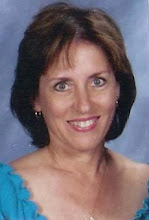I completed reading How the Virgin Mary Became the World’s
Most Powerful Woman, the cover story in National Geographic. A person who
has been to Medjugorje 13 times said, he’s become “a sort of mouthpiece for
Jesus Christ’s healing power and of course the Mother and the power of her
intercession.” I want to be that mouthpiece here. I liked how it was said that
her mantle offers both security and protection. Jesus begins his miracles with the wedding at
Cana when Mary says there is no wine. I never knew marigolds are named for her.
Mary draws millions each year to shrines such as Fátima, Portugal and Knock, Ireland.
She inspired the creation of many great works of art and architecture --Michelangelo’s
“Pietà. Muslims as well as Christians consider her to be holy above all women,
and her name appears more often in the Koran than Mary does in the Bible. In
the New Testament Mary speaks only four times. During the first millennium, as
Christianity became the official religion of the Roman Empire and began
spreading into Europe, Mary typically was portrayed as an imperial figure, the
equal of emperors, dressed in royal purple and gold. In the second millennium,
beginning in the 12th century, she
underwent a dramatic shift, evolving into a more accessible, kinder, gentler
maternal figure. One professor says she can be the grieving mother, the young
virgin, the goddess figure. Just as Jesus is the ideal man, Mary is the ideal
woman. During the Reformation (1517-1648), the idea of Mary as intercessor fell
out of favor with Protestants, who advocated going straight to God in prayer.
But Mary gained millions of new Catholic followers with the Spanish conquest in
the New World in the early 1500s—and, more recently, in Africa as Christianity
has spread there. Kibeho, a small town in southern Rwanda, is remembered as the
place where the Virgin Mary appeared to three young girls and foretold of the
blood and horror of the genocide that would traumatize the country in 1994,
when the majority Hutu attacked the minority Tutsi and in three months more
than 800,000 people were slaughtered. “The first time she appeared,” Anathalie
said, “I was reciting the rosary, and she called me by my name.” Mary told her she
appears to anyone she wants, anytime she wants, anywhere she wants. “She only
asks us to love her as much as she loves us.” Michael O’Neill, a Stanford
University graduate in mechanical engineering and product design, is the Virgin
Mary’s big data numbers cruncher. On his website, MiracleHunter.com, he has
codified every known apparition of Mary back to A.D. 40. Systematic
investigation and documentation of supernatural occurrences began with the
Council of Trent, the Catholic Church’s ecumenical reaction to the Reformation,
more than 450 years ago. Of the 2,000 apparitions reported since then, Miracle
Hunter cites a mere 28 as approved by local bishops, who are the first to
decide whether “seers” seem plausible. Sixteen of those have been recognized by
the Vatican. O’Neill, in his newly published book, Exploring the Miraculous,
details the Vatican’s painstaking process when deciding whether to endorse an
apparition as miraculous—“truly extraordinary.” The “authenticity” and mental
stability of the seer are prime, and anyone suspected of trying to gain fame or
riches from contact with the Virgin Mary is ignored or condemned. Medjugorje is
one of some two dozen sites in wait-and-see mode for Vatican approval. “Miracles transcend physical nature and
physical laws,” says Robert Spitzer, a Jesuit priest who heads the Magis Center
in California, which according to its website is dedicated to explaining faith,
physics and philosophy. Certain images and stories of the Virgin Mary are so
powerful they help define a country. That’s the case with Our Lady of
Guadalupe, whose image on the tilma, or cloak, of a poor Indian man gave rise,
in 1531, to Mexican identity. Juan Diego didn’t have much luck with the bishop,
who wanted a sign of some sort. Mary instructed him to climb the hill, cut some
flowers, and present them to the bishop. Flowers don’t bloom there in December,
but Juan Diego gathered a bouquet of beautiful roses, which he folded into his
tilma, believed to be woven from agave fibers. When he finally got to see the
bishop and opened his cloak, the roses spilled out, revealing the image of Our
Lady of Guadalupe. This is the only time Mary is said to have left a painted
portrait of herself.
Lourdes claims more than 7,000 miracles since the mid-1800s.
Only 69 have officially been recognized by the church. Lourdes has a giant
underground basilica built in 1958 to commemorate the centennial of the virgin’s
appearance in 1858 to Bernadette, an illiterate 14-year-old peasant girl. She
was later canonized. I recently watched the Oscar-winning movie. Mary commanded Bernadette to scoop up mud
with her hands to make a spring gurgle from the damp soil. She came from a poor
family who slept on straw and was first thought to be crazy. Then it was wondered
if there would be a profit in it and if the economy would soar. Fascinating to
think about.

No comments:
Post a Comment